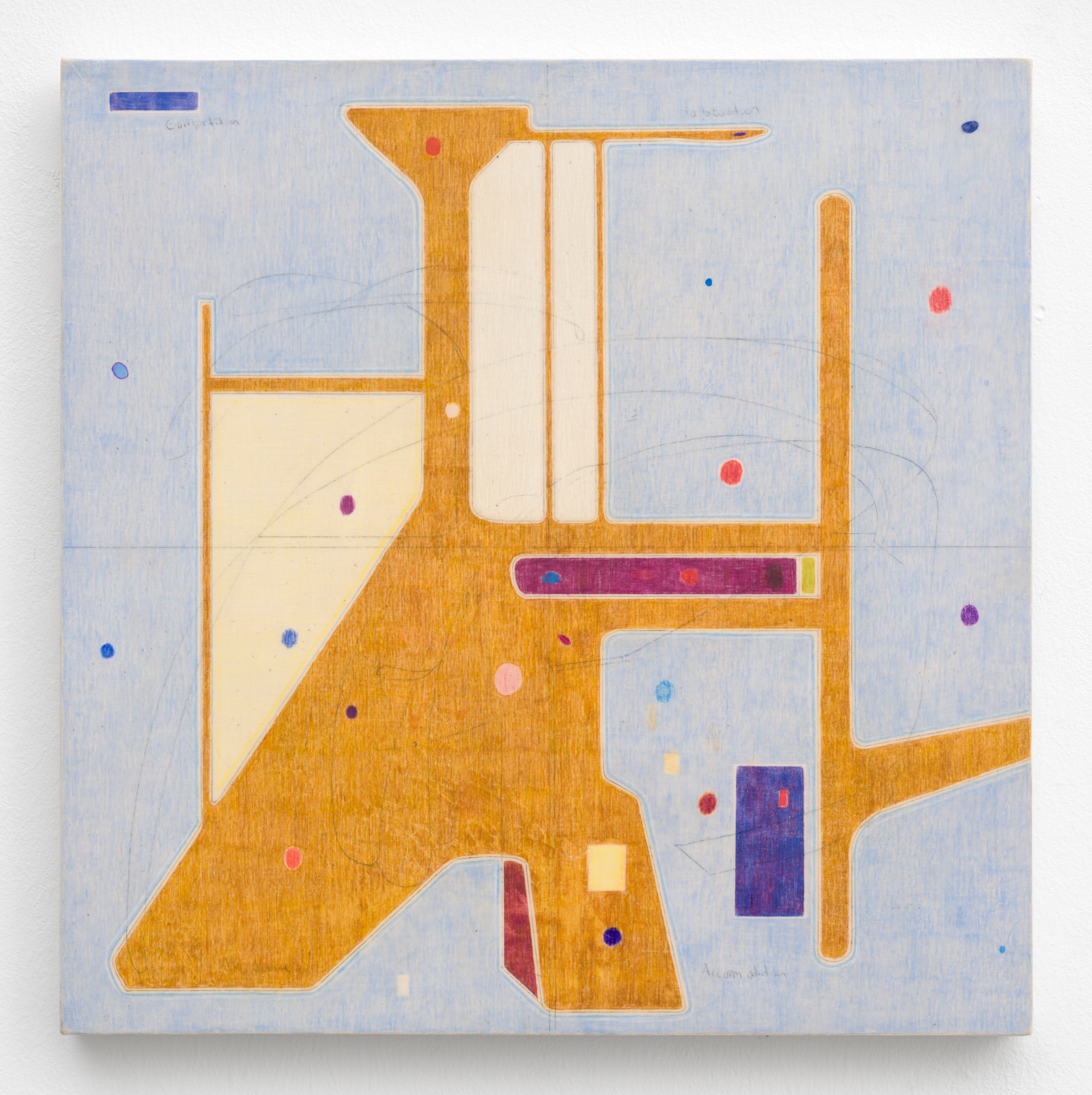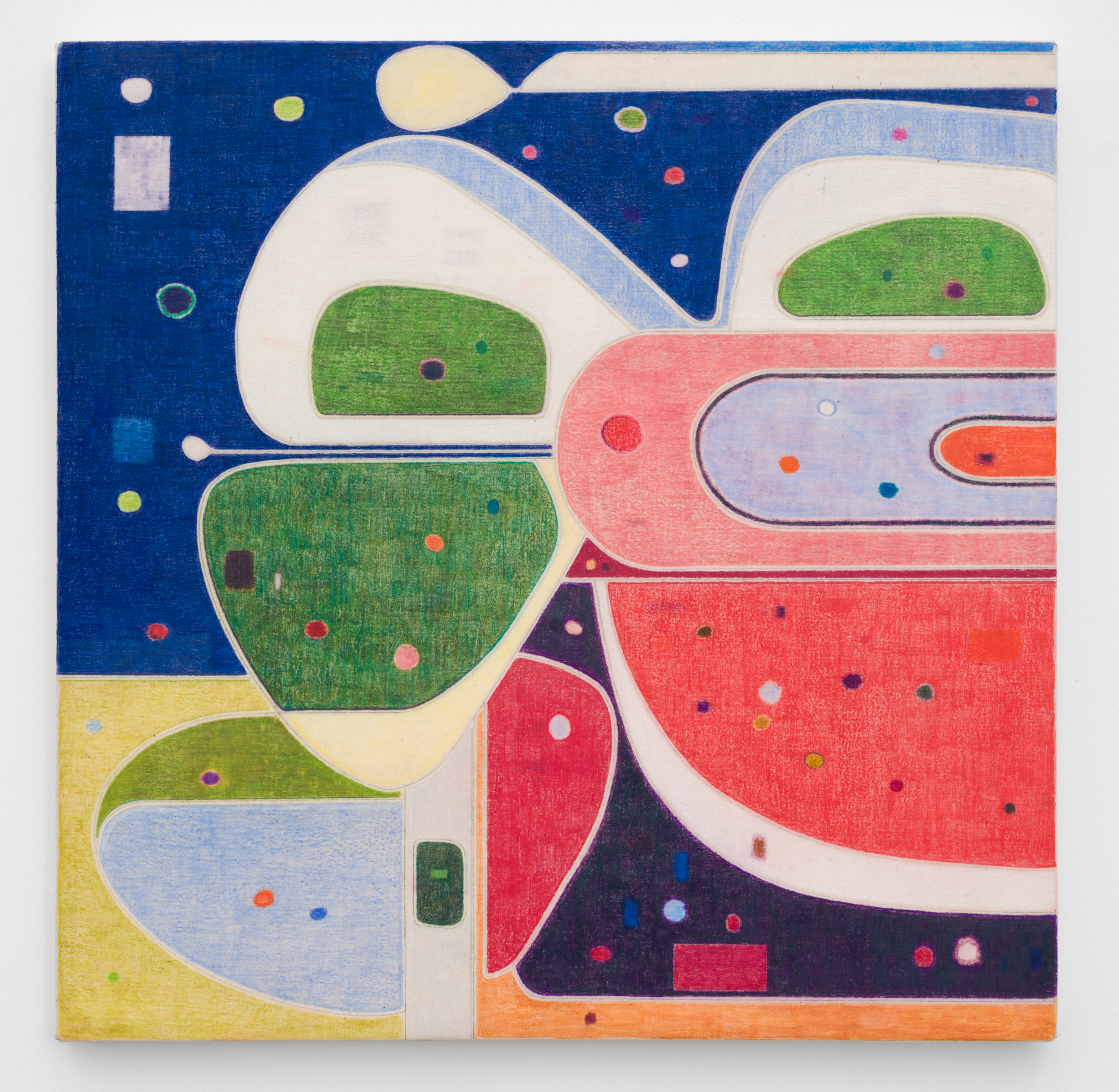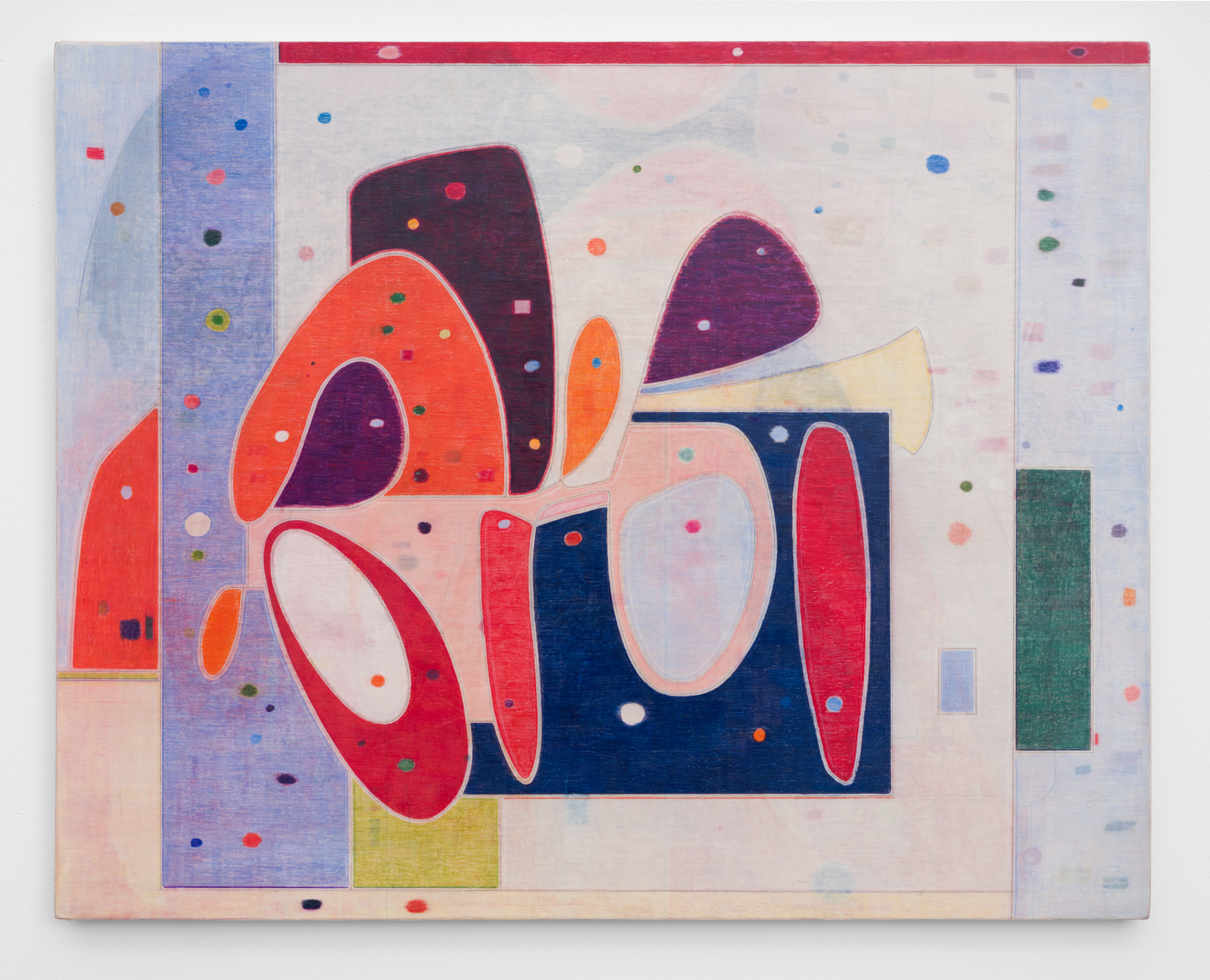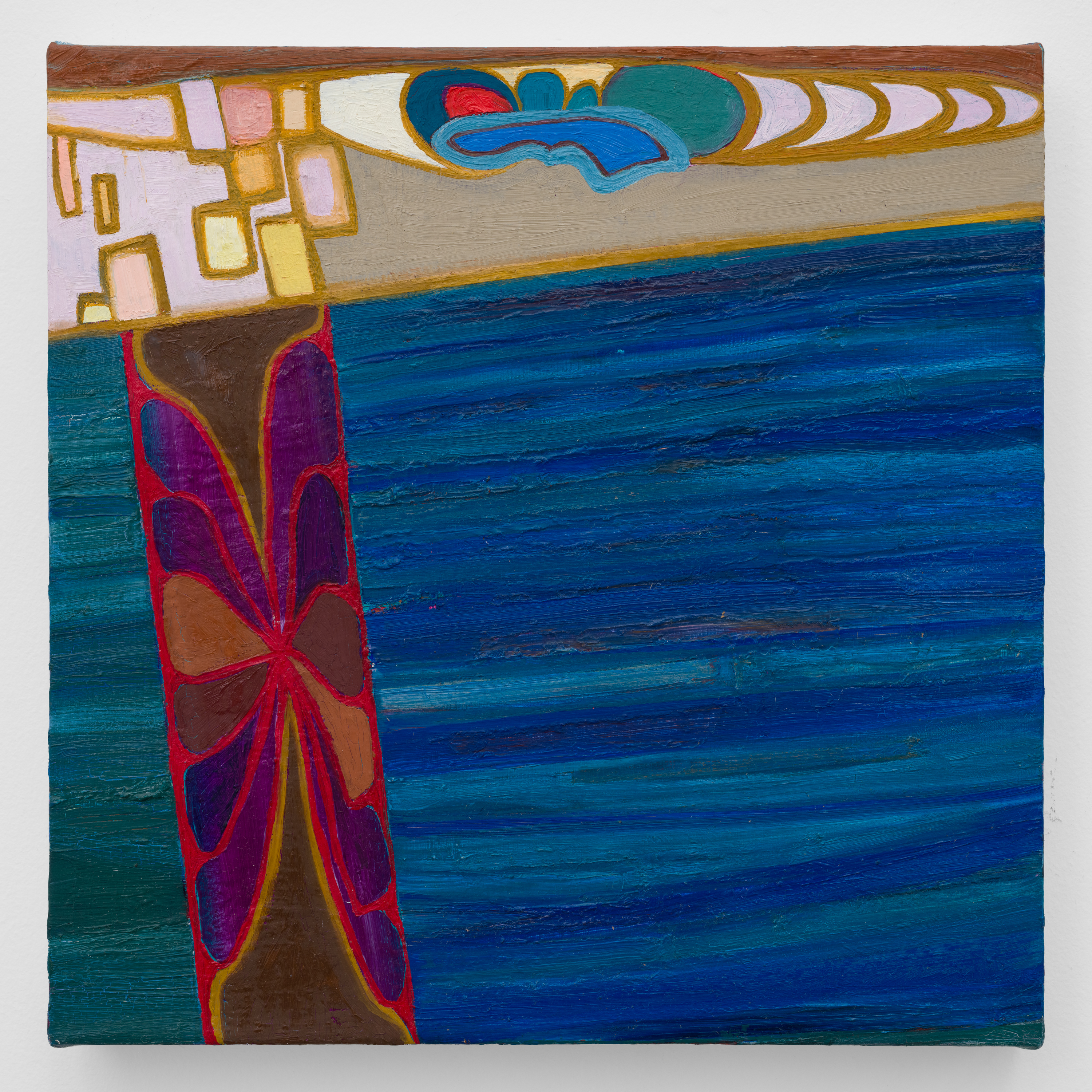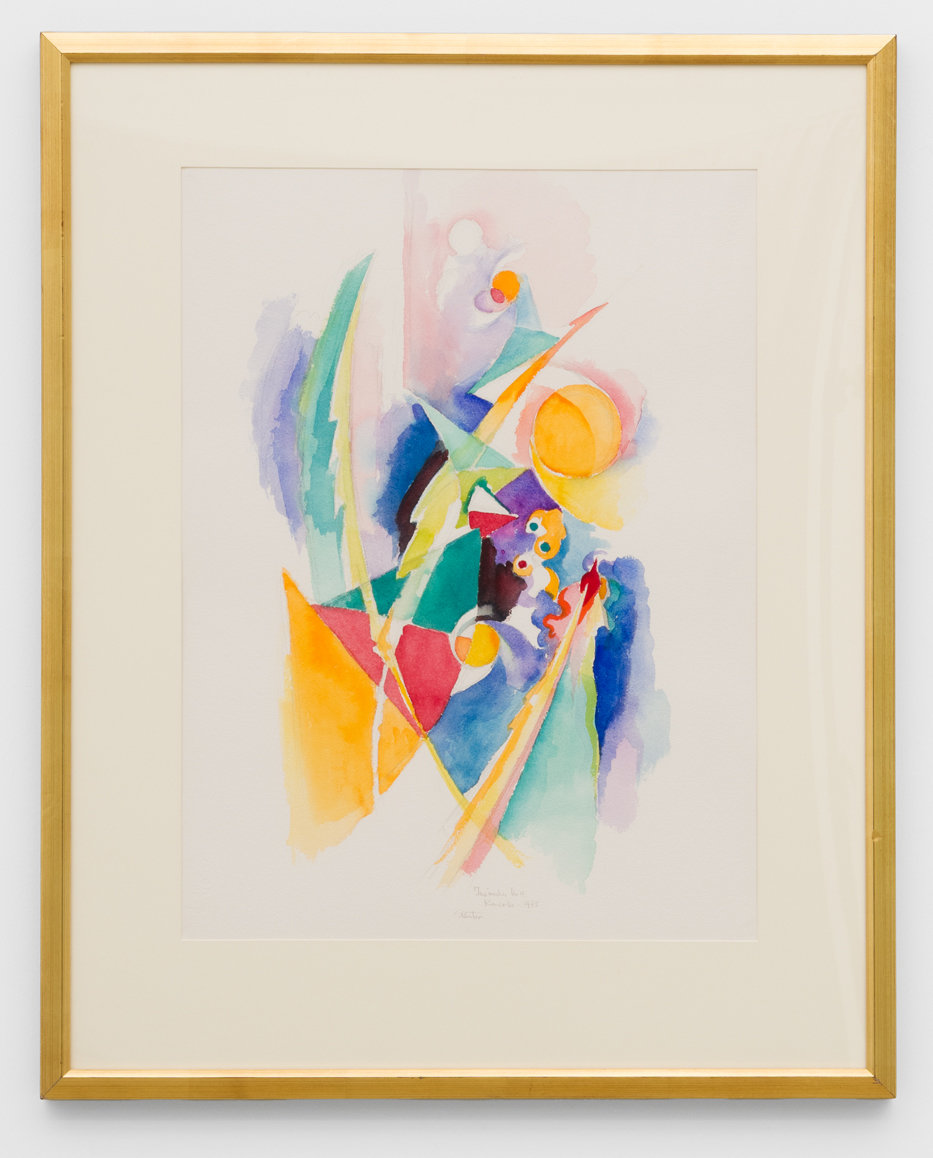With Color
Marlon Kroll, Stanton Macdonald-Wright, and Carrie Rudd
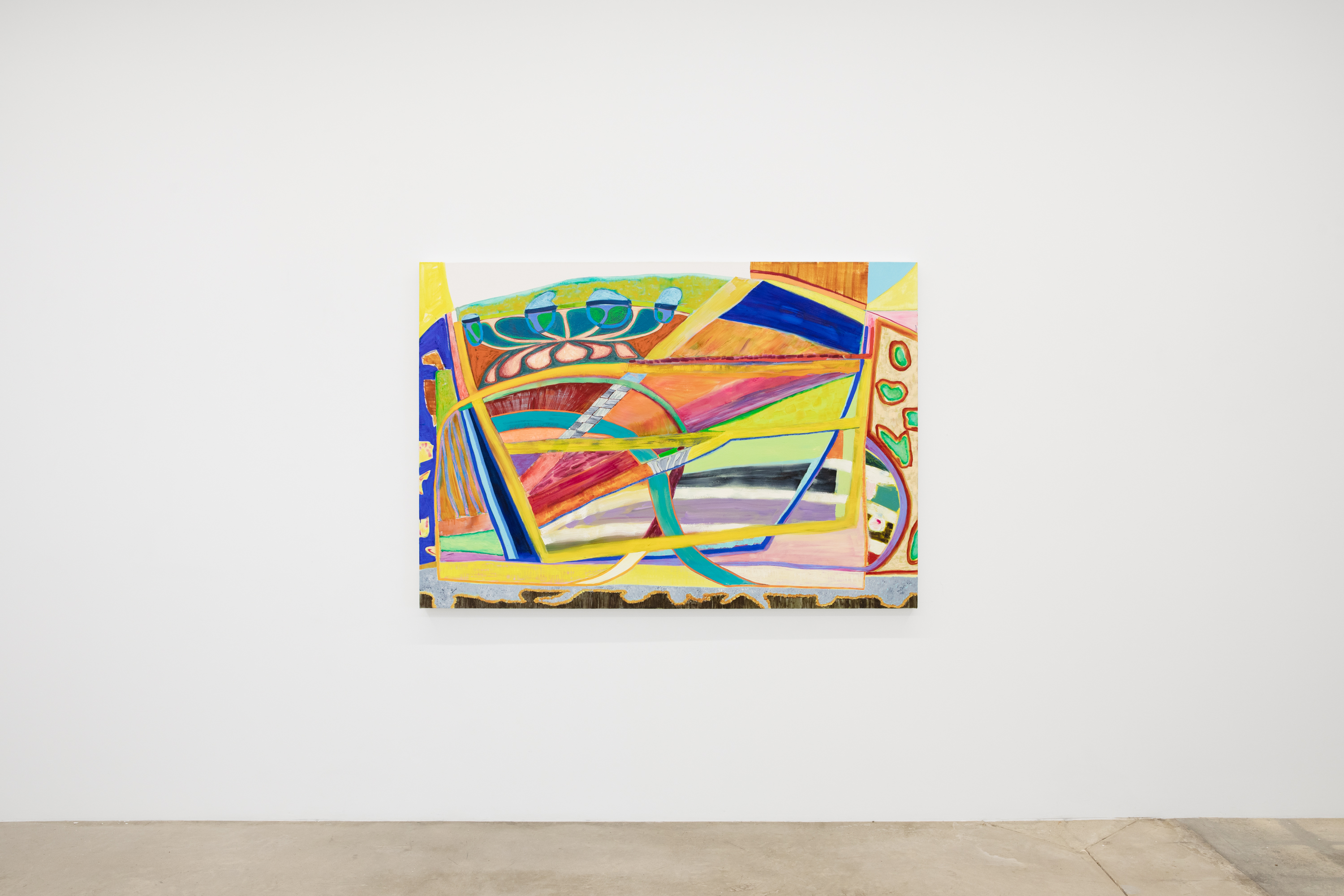
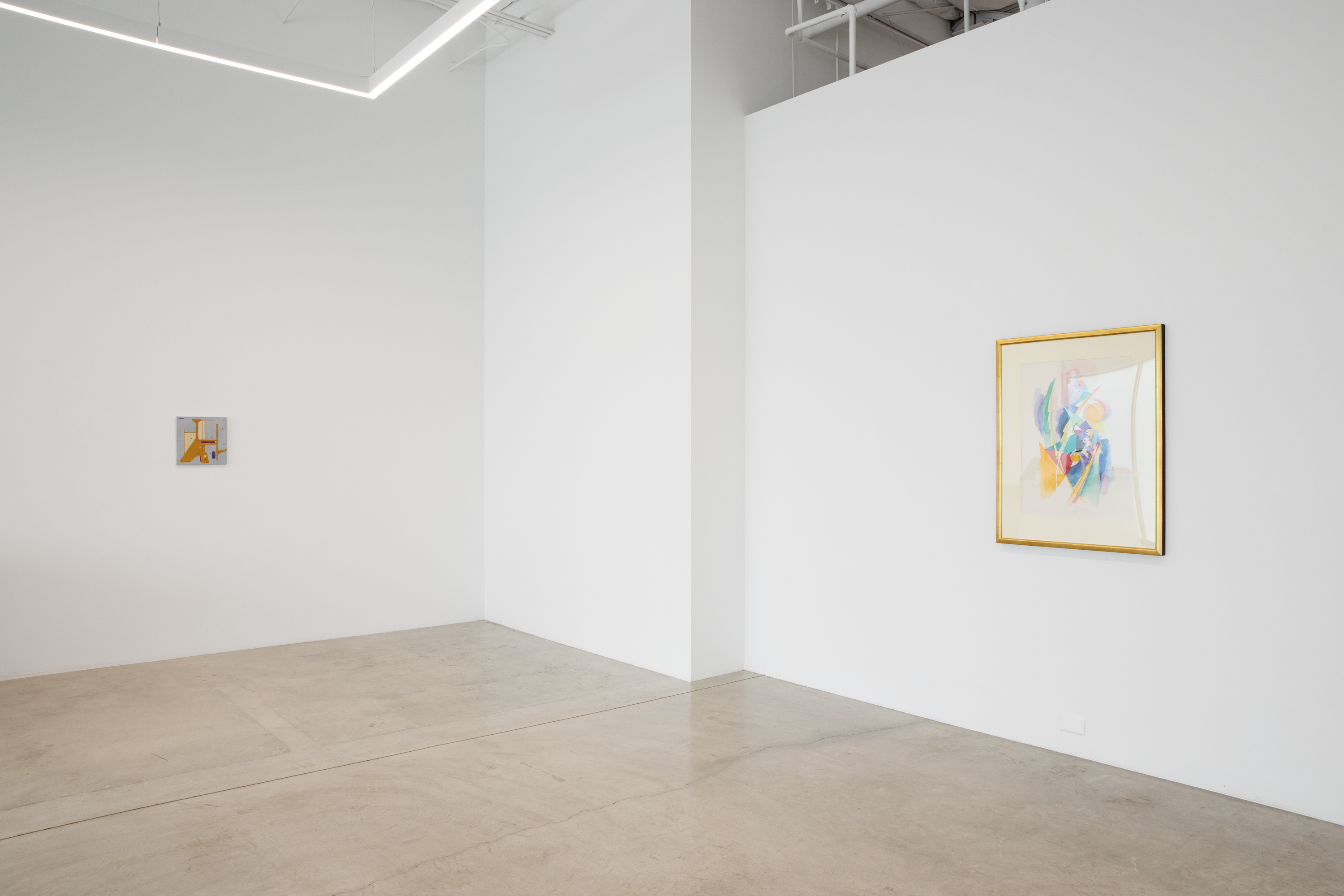

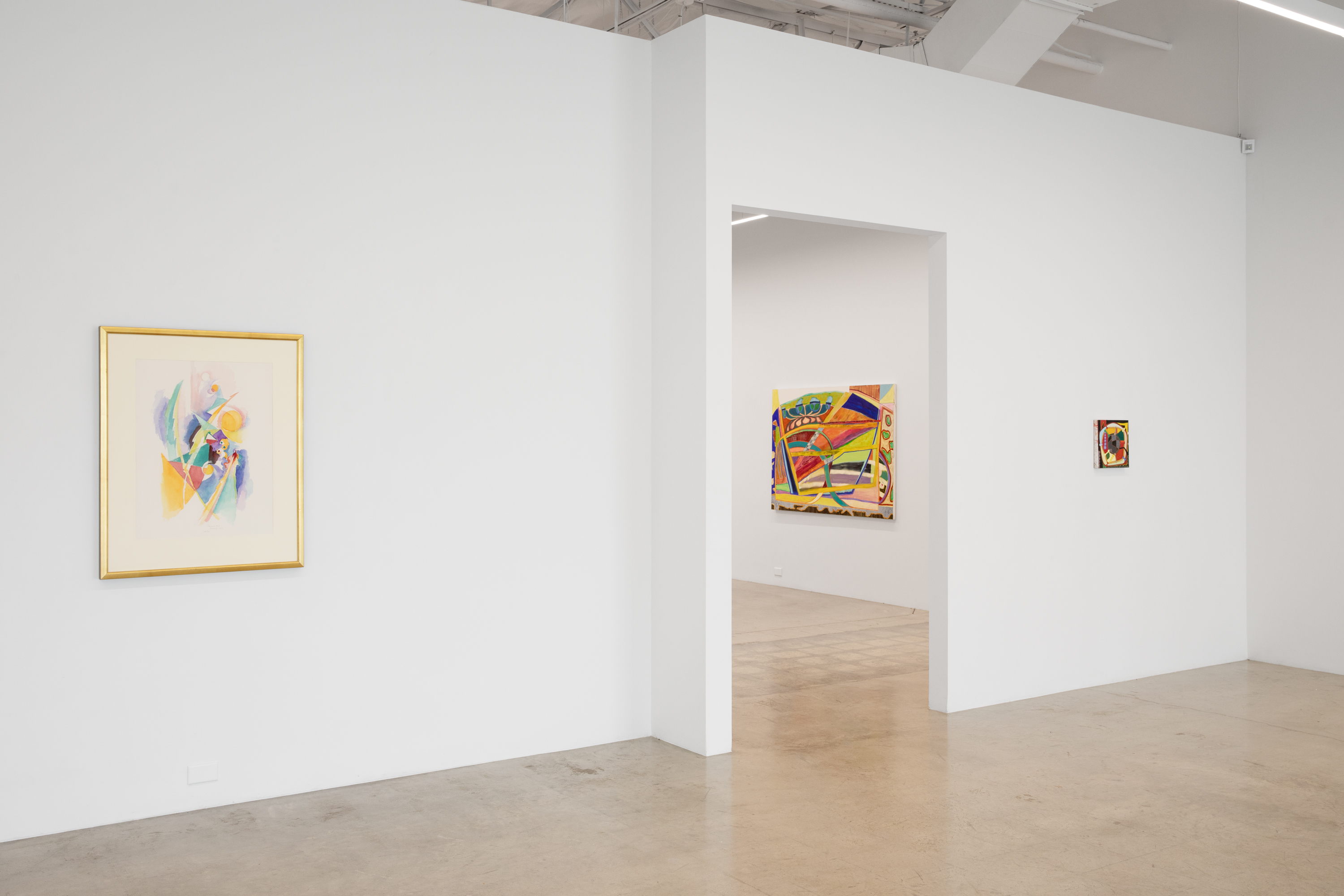




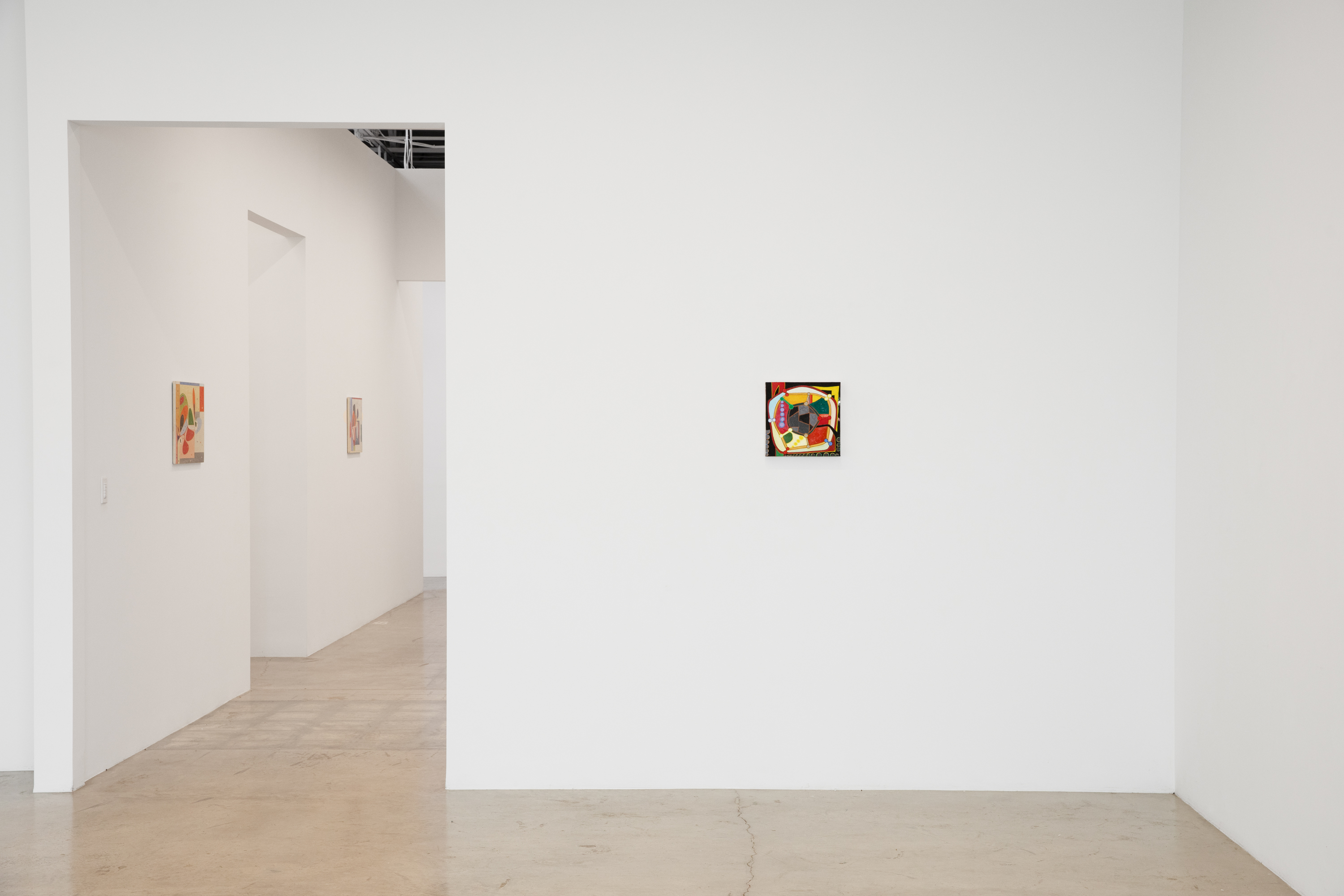


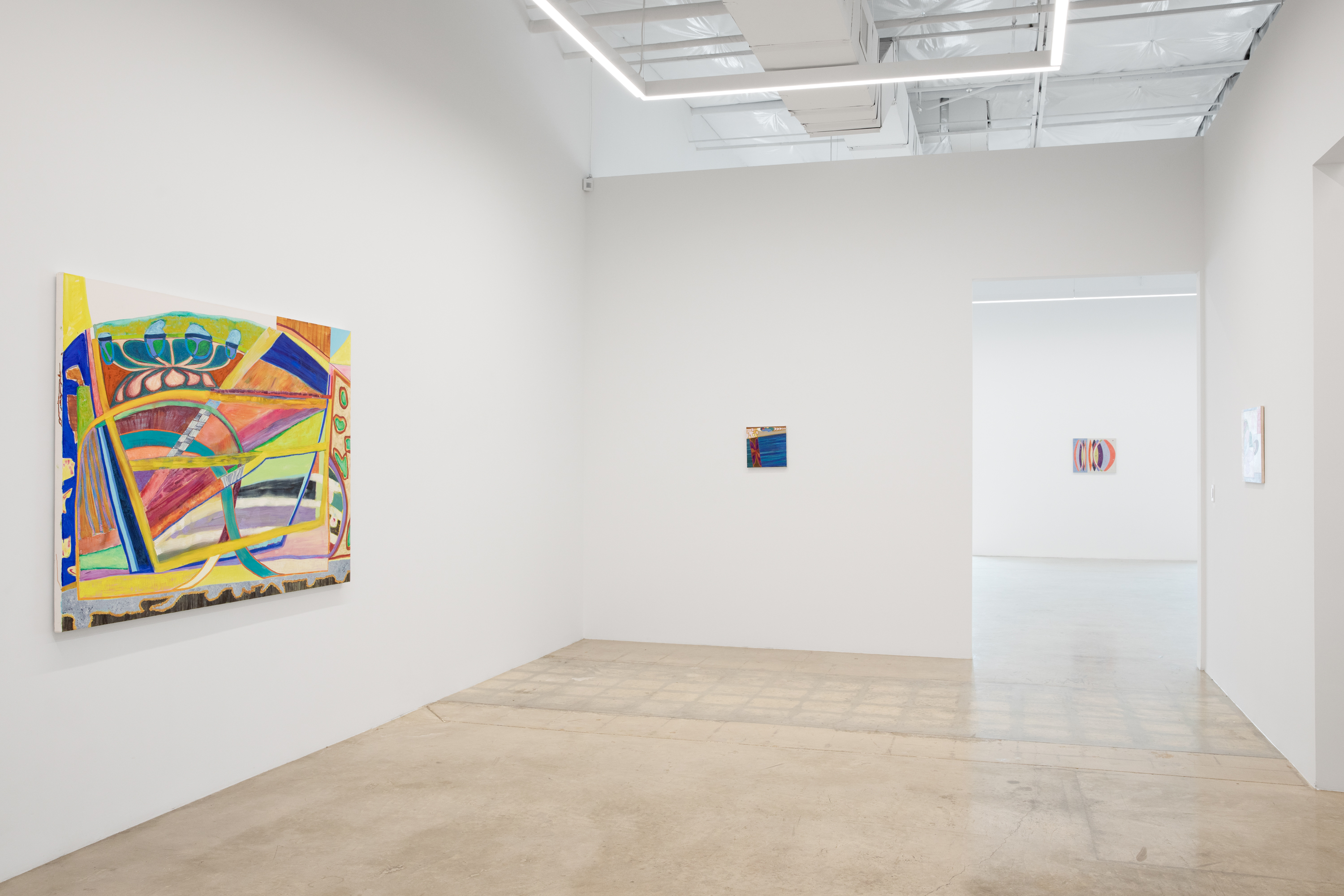



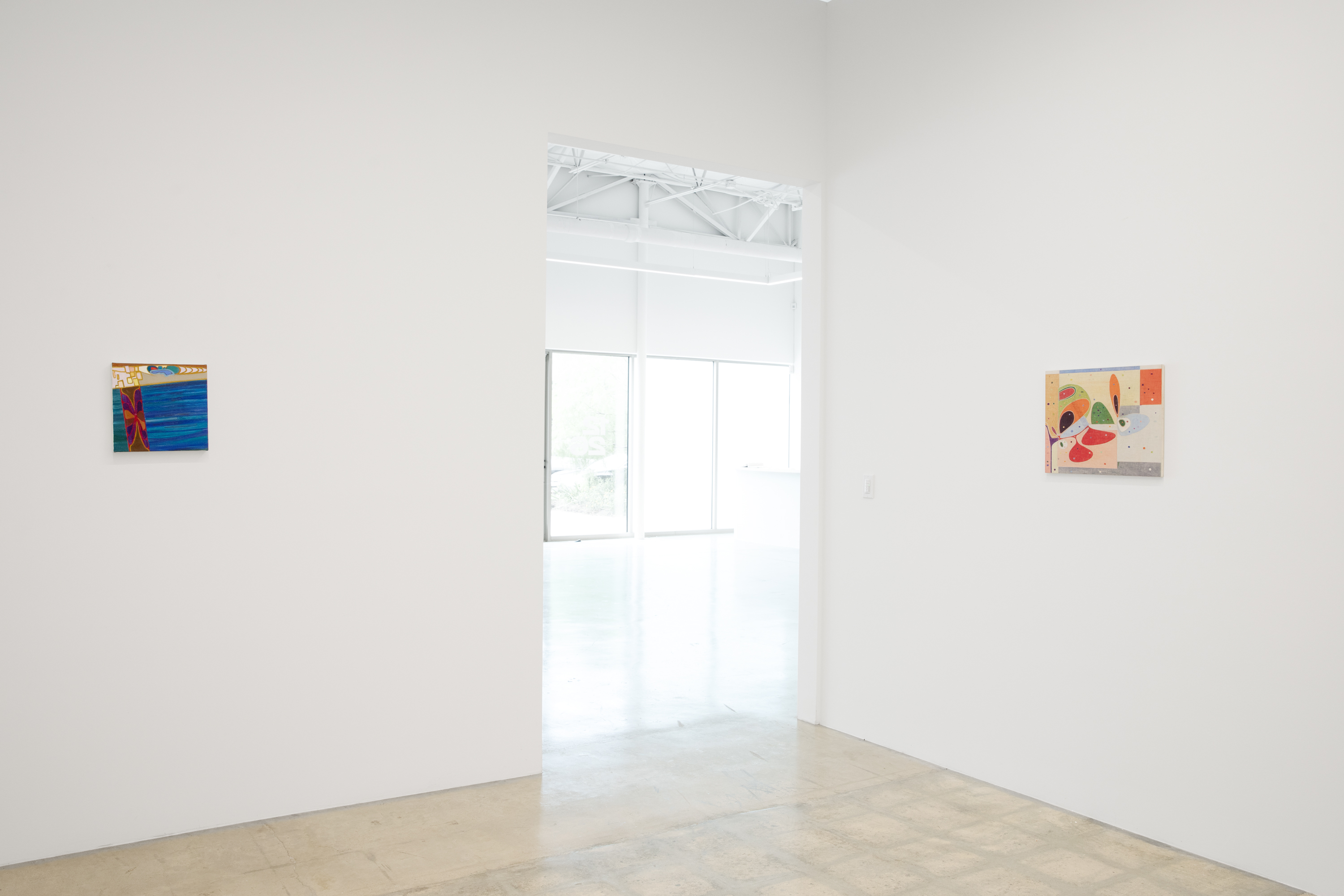
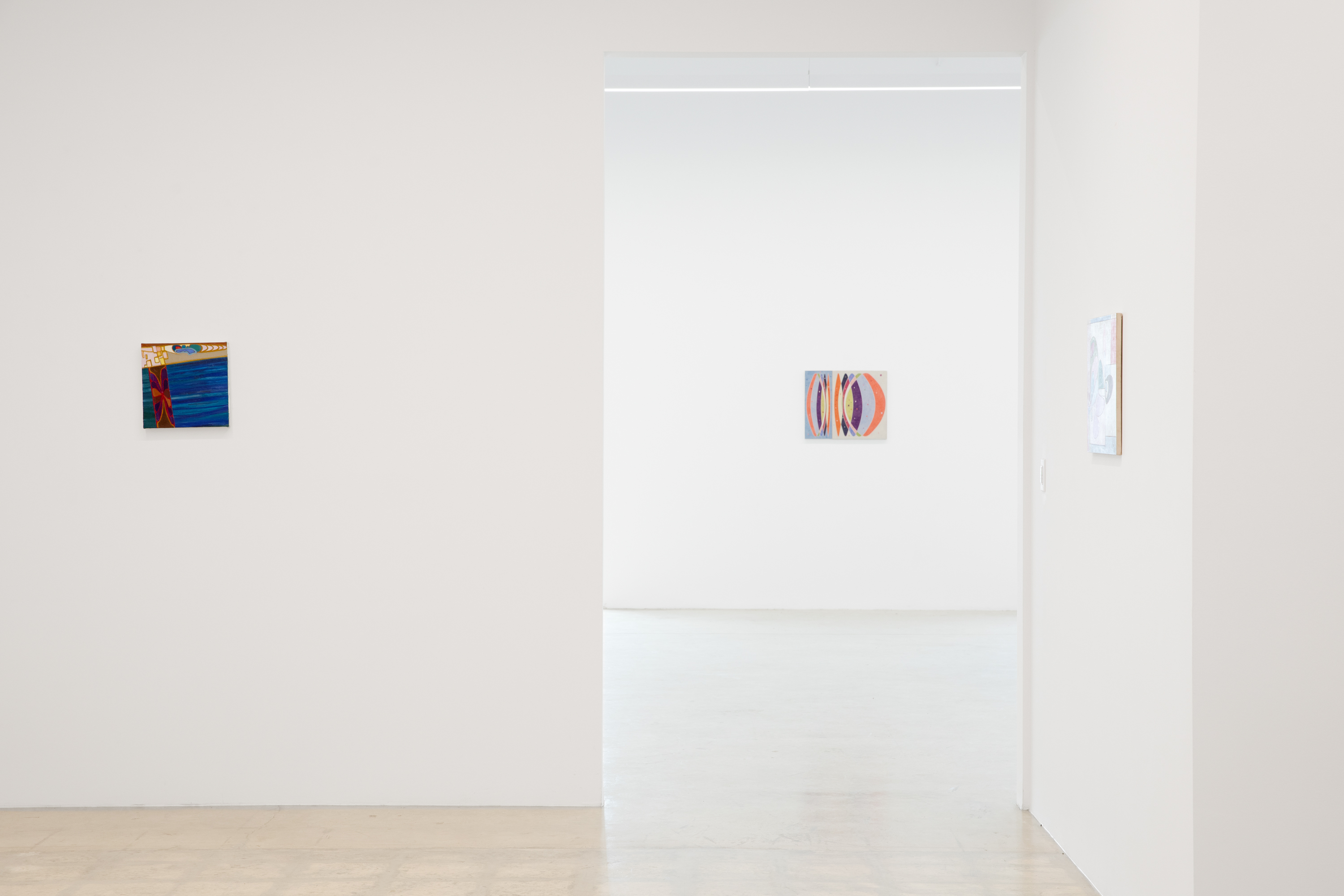
12.26 is pleased to present With Color, a three-person exhibition at the gallery’s Dallas location. The exhibition features new works by Marlon Kroll and Carrie Rudd alongside a historical watercolor from 1973 by Stanton Macdonald-Wright.
With Color generally speaks to the shared formal qualities of color, form, and movement within the abstract works of Kroll, Rudd, and Macdonald-Wright. Conceptually, the exhibition meditates on the significance of communication, history, and spirituality. The paintings’ complementary chromes, organic, inorganic shapes, and askew compositions tie them together in the reverie of an established abstract practice. There is a resurgence of abstraction, and upholding the aged tradition is essential for Kroll and Rudd.
The living artists are honored to present alongside Macdonald-Wright, co-founder of the Synchromism movement and a foundational figure in American abstraction. His spirit echoes off the canvas and ruminates within the gallery. Kroll and Rudd’s paintings are spiritual conduits, communing with Stanton on a plane of existence outside our view or perception.
The Synchromism movement of the early 1910s and 20s encouraged artists to use color that resonated with sound or music. Kroll and Rudd acknowledge the quiet and rooted synchronic connections their work harks back to, but perceive their variations in a more idiosyncratic and personal light.
Rudd’s Synchronized Tupperware Topping represents two effects. First, the diptych reflects the nature of collaboration between Kroll and Rudd. Second, the title alludes to an idea that originated in Rudd’s mind while rummaging through a Tupperware-filled cupboard. What would it look like if Tupperware stacking were an Olympic sport? The painting answers that question and validates the essence of abstraction through joyful play.
As Kroll puts it himself, abstract painters are in the business of invention. They manifest thought and translate it into a visual language or wordless philosophy. The polymorphous abilities of abstraction are what imbue it with value. For Kroll, the power of objects, and in this case paintings, is that they elicit a sort of sympathetic magic, associating their corporeal selves with nonmaterial ideas.
Color varies depending on who you ask. Rudd uses color as a code, operating as an organizational principle, and encouraging the development of a composition. Her paintings show what thinking feels like. Each color is assigned a potential idea, and through the act of discovery, these colors find relationships with one another.
On the other hand, Kroll is task-oriented, seeking out a balance of color while symbolically presenting a spectral body or building. In one of his works featuring an architectural yellow structure, the words “competition,” “accommodation,” “collaboration,” and “avoidance” float under the hazy, bluish surface. Perhaps these hidden messages point to Kroll’s identification in the exhibition process. A cacophony of labels, a whirl of marks, and a sound structure reference the artist’s active efforts to engage in an unspoken dialogue with Rudd and Macdonald-Wright.
Marlon Kroll (b. 1992, Hamburg, Germany) lives and works in Montreal, QC, Canada. He holds a BFA in Ceramics from Concordia University and is one of nine laureates of the Darling Foundry’s 2019-2022 Montreal Studio Program. He was the 2020 recipient of the William and Meredith Saunderson Prize for Emerging Artists. Selected recent exhibitions include David Peter Francis, New York, NY (2025); Unit 17, Vancouver, BC (2024); Management, NY (2024), 12.26, Los Angeles, CA (2024); Eli Kerr, Montreal (2023) Pangee, Montreal (2022) and Galerie Acapella, Naples, Italy (2022); among others.
Stanton Macdonald-Wright (b. 1890, Charlottesville, VA; d. 1973, Los Angeles, CA). Stanton studied at various universities in Paris, including the Sorbonne, the Académie Julian, the École de Beaux-Arts, and the Académie Colarossi. He and Morgan Russell co-founded the Synchromism movement, one of America's earliest abstract, internationally recognized avant-garde art movements.
His work is in the permanent collections of numerous institutions including the Blanton Museum of Art, Austin, TX; the Museum of Modern Art, New York; the Brooklyn Museum, Brooklyn, NY; the Metropolitan Museum of Art, New York, NY; and the Smithsonian American Art Museum, Washington, D.C.
Carrie Rudd (b. 1994, Hastings on Hudson, New York) lives and works in Brooklyn, NY. She completed her MFA at Hunter College in 2021. Rudd has had previous solo exhibitions at NARANJO 141, Mexico City, MX (2025); Polina Berlin Gallery, New York, NY (2024, 2023 & 2022); among others. Her work has been included in group exhibitions at Chapter NY, New York, NY (2024); Polina Berlin Gallery, New York, NY (2024); Superzoom, Paris, FR (2023); Hauser & Wirth, New York, NY (2021); Hunter College, New York, NY (2019); and the Wellin Museum of Art, Clinton, NY (2016).
With Color generally speaks to the shared formal qualities of color, form, and movement within the abstract works of Kroll, Rudd, and Macdonald-Wright. Conceptually, the exhibition meditates on the significance of communication, history, and spirituality. The paintings’ complementary chromes, organic, inorganic shapes, and askew compositions tie them together in the reverie of an established abstract practice. There is a resurgence of abstraction, and upholding the aged tradition is essential for Kroll and Rudd.
The living artists are honored to present alongside Macdonald-Wright, co-founder of the Synchromism movement and a foundational figure in American abstraction. His spirit echoes off the canvas and ruminates within the gallery. Kroll and Rudd’s paintings are spiritual conduits, communing with Stanton on a plane of existence outside our view or perception.
The Synchromism movement of the early 1910s and 20s encouraged artists to use color that resonated with sound or music. Kroll and Rudd acknowledge the quiet and rooted synchronic connections their work harks back to, but perceive their variations in a more idiosyncratic and personal light.
Rudd’s Synchronized Tupperware Topping represents two effects. First, the diptych reflects the nature of collaboration between Kroll and Rudd. Second, the title alludes to an idea that originated in Rudd’s mind while rummaging through a Tupperware-filled cupboard. What would it look like if Tupperware stacking were an Olympic sport? The painting answers that question and validates the essence of abstraction through joyful play.
As Kroll puts it himself, abstract painters are in the business of invention. They manifest thought and translate it into a visual language or wordless philosophy. The polymorphous abilities of abstraction are what imbue it with value. For Kroll, the power of objects, and in this case paintings, is that they elicit a sort of sympathetic magic, associating their corporeal selves with nonmaterial ideas.
Color varies depending on who you ask. Rudd uses color as a code, operating as an organizational principle, and encouraging the development of a composition. Her paintings show what thinking feels like. Each color is assigned a potential idea, and through the act of discovery, these colors find relationships with one another.
On the other hand, Kroll is task-oriented, seeking out a balance of color while symbolically presenting a spectral body or building. In one of his works featuring an architectural yellow structure, the words “competition,” “accommodation,” “collaboration,” and “avoidance” float under the hazy, bluish surface. Perhaps these hidden messages point to Kroll’s identification in the exhibition process. A cacophony of labels, a whirl of marks, and a sound structure reference the artist’s active efforts to engage in an unspoken dialogue with Rudd and Macdonald-Wright.
Marlon Kroll (b. 1992, Hamburg, Germany) lives and works in Montreal, QC, Canada. He holds a BFA in Ceramics from Concordia University and is one of nine laureates of the Darling Foundry’s 2019-2022 Montreal Studio Program. He was the 2020 recipient of the William and Meredith Saunderson Prize for Emerging Artists. Selected recent exhibitions include David Peter Francis, New York, NY (2025); Unit 17, Vancouver, BC (2024); Management, NY (2024), 12.26, Los Angeles, CA (2024); Eli Kerr, Montreal (2023) Pangee, Montreal (2022) and Galerie Acapella, Naples, Italy (2022); among others.
Stanton Macdonald-Wright (b. 1890, Charlottesville, VA; d. 1973, Los Angeles, CA). Stanton studied at various universities in Paris, including the Sorbonne, the Académie Julian, the École de Beaux-Arts, and the Académie Colarossi. He and Morgan Russell co-founded the Synchromism movement, one of America's earliest abstract, internationally recognized avant-garde art movements.
His work is in the permanent collections of numerous institutions including the Blanton Museum of Art, Austin, TX; the Museum of Modern Art, New York; the Brooklyn Museum, Brooklyn, NY; the Metropolitan Museum of Art, New York, NY; and the Smithsonian American Art Museum, Washington, D.C.
Carrie Rudd (b. 1994, Hastings on Hudson, New York) lives and works in Brooklyn, NY. She completed her MFA at Hunter College in 2021. Rudd has had previous solo exhibitions at NARANJO 141, Mexico City, MX (2025); Polina Berlin Gallery, New York, NY (2024, 2023 & 2022); among others. Her work has been included in group exhibitions at Chapter NY, New York, NY (2024); Polina Berlin Gallery, New York, NY (2024); Superzoom, Paris, FR (2023); Hauser & Wirth, New York, NY (2021); Hunter College, New York, NY (2019); and the Wellin Museum of Art, Clinton, NY (2016).


